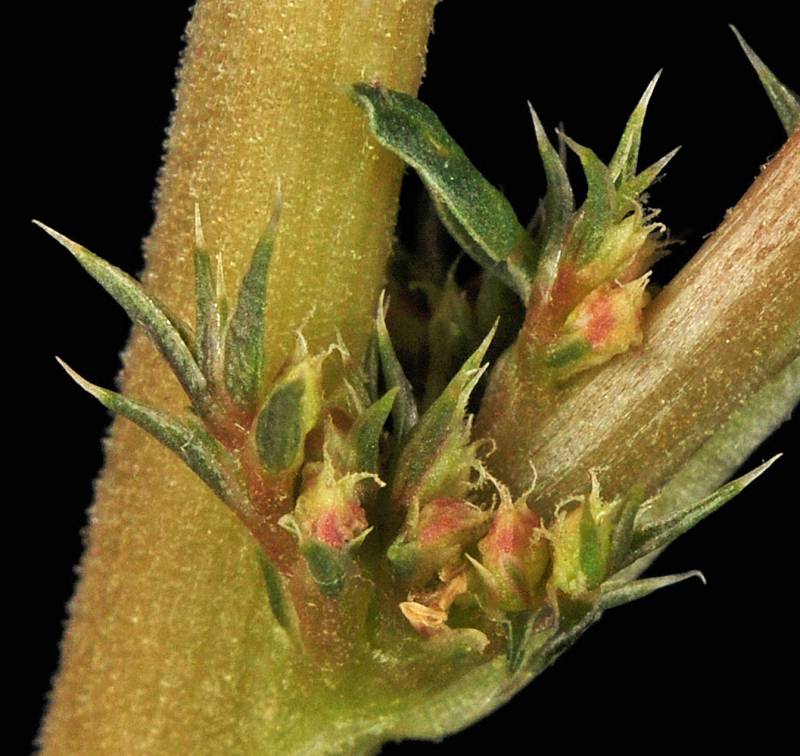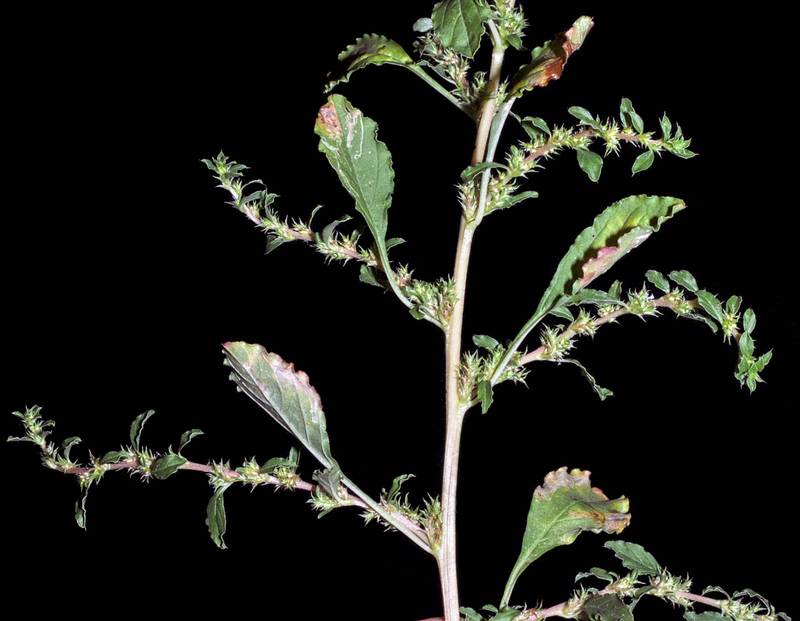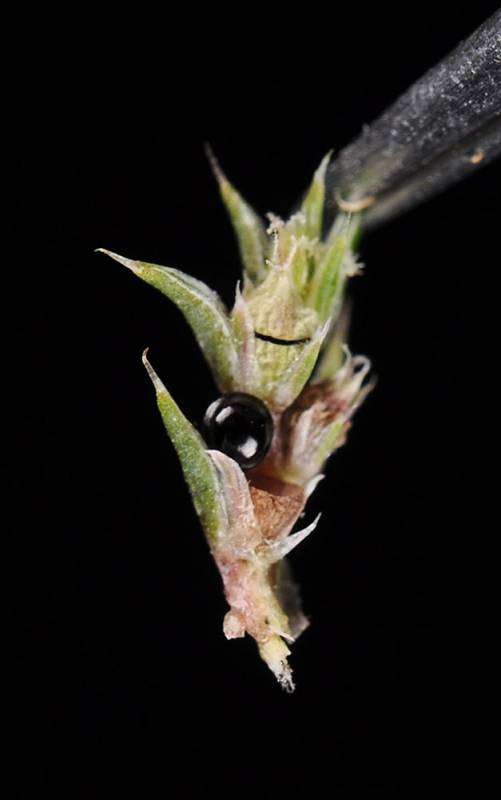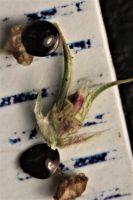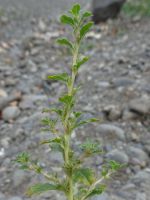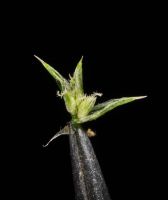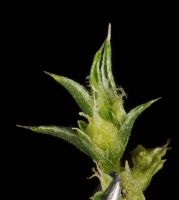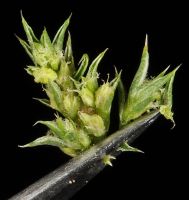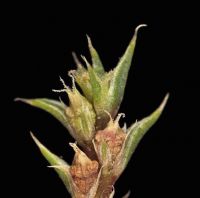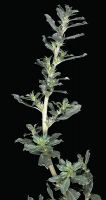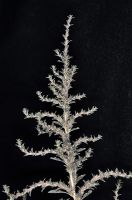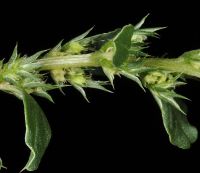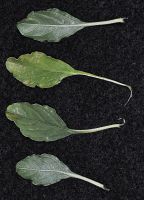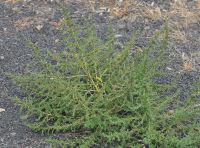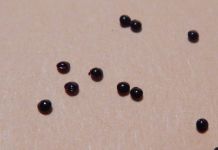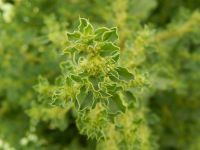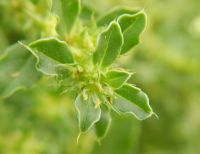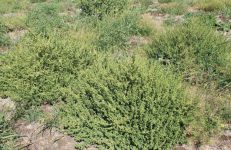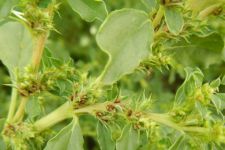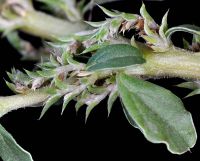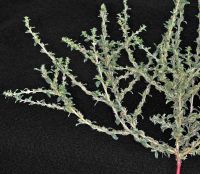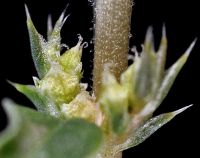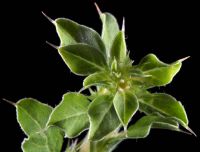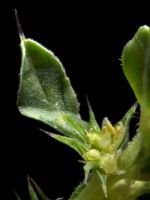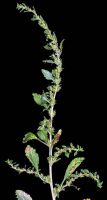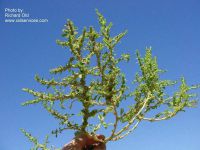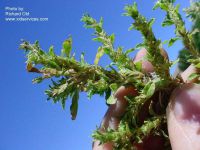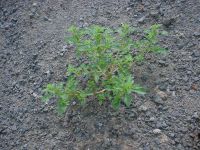Distribution: Occurring chiefly east of the Cascades crest in Washington; British Columbia to California, east across much of North America to the Atlantic Coast.
Habitat: Dry, disturbed areas.
Flowers: June-September
Origin: Introduced from tropical America
Growth Duration: Annual
Conservation Status: Not of concern
Pollination: Wind
Annual herb, glabrous or becoming glabrous, or sticky-pubescent; stems typically erect or rarely nearly prostrate, up to 1 m, usually heavily branched, typically green, or white when dry, somewhat to greatly woolly towards ends of stems.
Leaves alternate, petiolate, petiole 5-40 mm; blade obovate to narrowly spoon-shaped, base narrowly cuneate, apex obtuse to acute, margins entire and may be flat or occasionally wavy; cauline leaves 40-80 mm long and 15-30 mm broad, usually deciduous and replaced by axillary leaves, 7-20 mm long and 3-10 mm broad.
Inflorescence a cymose axillary cluster, green, 3-flowered; bracts 1, 1.5-4 mm, generally 1.5-2 times the perianth, linear-lanceolate to awl-shaped, tip somewhat spined.
Staminate flowers dispersed among pistillate flowers, perianth parts 3, stamens 3, filaments free, anthers 4-locular; pistillate flowers perianth parts 3, to 2 mm, oblong-lanceolate to linear, tip acute, stigmas 3 and erect, ovary ovoid, styles absent.
Utricles dehiscing along a fissure encircling the whole fruit, 1.5-2 mm, larger than or equal to perianth, ellipsoid-ovoid, greenish white to brown, wrinkled especially near tip; seed approximately 1 mm, lenticular, reddish brown, smooth, shiny.
Publication: Syst. Nat. ed. 10. 2: 1268. 1759.
Amaranthus pubescens (Uline & W.L. Bray) Rydb.
PNW Herbaria: Specimen records of Amaranthus albus in the Consortium of Pacific Northwest Herbaria database
WA Flora Checklist: Amaranthus albus checklist entry
OregonFlora: Amaranthus albus information
E-Flora BC: Amaranthus albus atlas page
CalPhotos: Amaranthus albus photos

